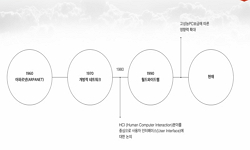As the flow of time change, spaces are gradually embracing new paradigms, and domestic and international brands are presenting trends that utilize space in response to the emergence of various consumption patterns. This study emphasizes the importance...
http://chineseinput.net/에서 pinyin(병음)방식으로 중국어를 변환할 수 있습니다.
변환된 중국어를 복사하여 사용하시면 됩니다.
- 中文 을 입력하시려면 zhongwen을 입력하시고 space를누르시면됩니다.
- 北京 을 입력하시려면 beijing을 입력하시고 space를 누르시면 됩니다.

경험 가치 향상을 위한 UX 디자인 기반의 스페이스 브랜딩 공간 특성 연구 -인테리어브랜드 쇼룸을 중심으로- = A Study on the Spatial Characteristics of UX Design-Based Space Branding for Enhancing Experiential Value - Focusing on Interior Brand Showrooms -
한글로보기https://www.riss.kr/link?id=A109621481
- 저자
- 발행기관
- 학술지명
- 권호사항
-
발행연도
2025
-
작성언어
Korean
- 주제어
-
등재정보
KCI등재
-
자료형태
학술저널
-
수록면
117-130(14쪽)
- DOI식별코드
- 제공처
-
0
상세조회 -
0
다운로드
부가정보
다국어 초록 (Multilingual Abstract)
Additionally, it selects domestic and international interior brand showrooms as case studies to evaluate UX design elements and spatial characteristics. The results identify eight components of UX design: ‘sensory stimulation,’ ‘symbolism,’ ‘interactivity,’ ‘extraordinariness,’ ‘accessibility,’ ‘informativeness,’ ‘associativity,’ and ‘reliability.’ Similarly, the characteristics of space branding are classified into eight categories: ‘engagement,’ ‘relationship,’ ‘playfulness,’ ‘visuality,’ ‘differentiation,’ ‘informativeness,’ ‘sustainability,’ and ‘experientiality.’ These derived characteristics were found to be interrelated through relationships. The study confirms that UX design elements play a crucial role in space branding and contribute to enhancing user experience. However, the case analysis revealed some limitations, such as a lack of diversity in experience delivery methods and the limited scope of content. To address these issues, the study suggests the need for more multi-layered experience design strategies. This research provides practical implications for UX design-based space branding studies. Furthermore, future research aims to analyze brand spaces across various industries to derive more comprehensive design strategies.
As the flow of time change, spaces are gradually embracing new paradigms, and domestic and international brands are presenting trends that utilize space in response to the emergence of various consumption patterns. This study emphasizes the importance of spatial experiences provided by brands and aims to analyze the characteristics of space branding based on UX design. As a research method, this study reviews the key concepts and characteristics of UX design and space branding based on prior research.
Additionally, it selects domestic and international interior brand showrooms as case studies to evaluate UX design elements and spatial characteristics. The results identify eight components of UX design: ‘sensory stimulation,’ ‘symbolism,’ ‘interactivity,’ ‘extraordinariness,’ ‘accessibility,’ ‘informativeness,’ ‘associativity,’ and ‘reliability.’ Similarly, the characteristics of space branding are classified into eight categories: ‘engagement,’ ‘relationship,’ ‘playfulness,’ ‘visuality,’ ‘differentiation,’ ‘informativeness,’ ‘sustainability,’ and ‘experientiality.’ These derived characteristics were found to be interrelated through relationships. The study confirms that UX design elements play a crucial role in space branding and contribute to enhancing user experience. However, the case analysis revealed some limitations, such as a lack of diversity in experience delivery methods and the limited scope of content. To address these issues, the study suggests the need for more multi-layered experience design strategies. This research provides practical implications for UX design-based space branding studies. Furthermore, future research aims to analyze brand spaces across various industries to derive more comprehensive design strategies.
동일학술지(권/호) 다른 논문
-
지역 경제 활성화 전략 도출을 위한 국내·외 지하상가 서비스 디자인에 관한 연구
- 한국전시산업융합연구원
- 오인균
- 2025
- KCI등재
-
한글 타이포그래피의 특징과 기계 자수 기법을 융합한 패션디자인 연구
- 한국전시산업융합연구원
- 이승익
- 2025
- KCI등재
-
텍스타일 디자인을 위한 근세 서양 명화의 의복 문양 연구 -문양의 유형과 배치 구도를 중심으로-
- 한국전시산업융합연구원
- 김경화
- 2025
- KCI등재
-
국제우주정거장(ISS)을 위한 수면 공간 모듈 선행 디자인 연구
- 한국전시산업융합연구원
- 유은선
- 2025
- KCI등재




 KCI
KCI DBpia
DBpia






